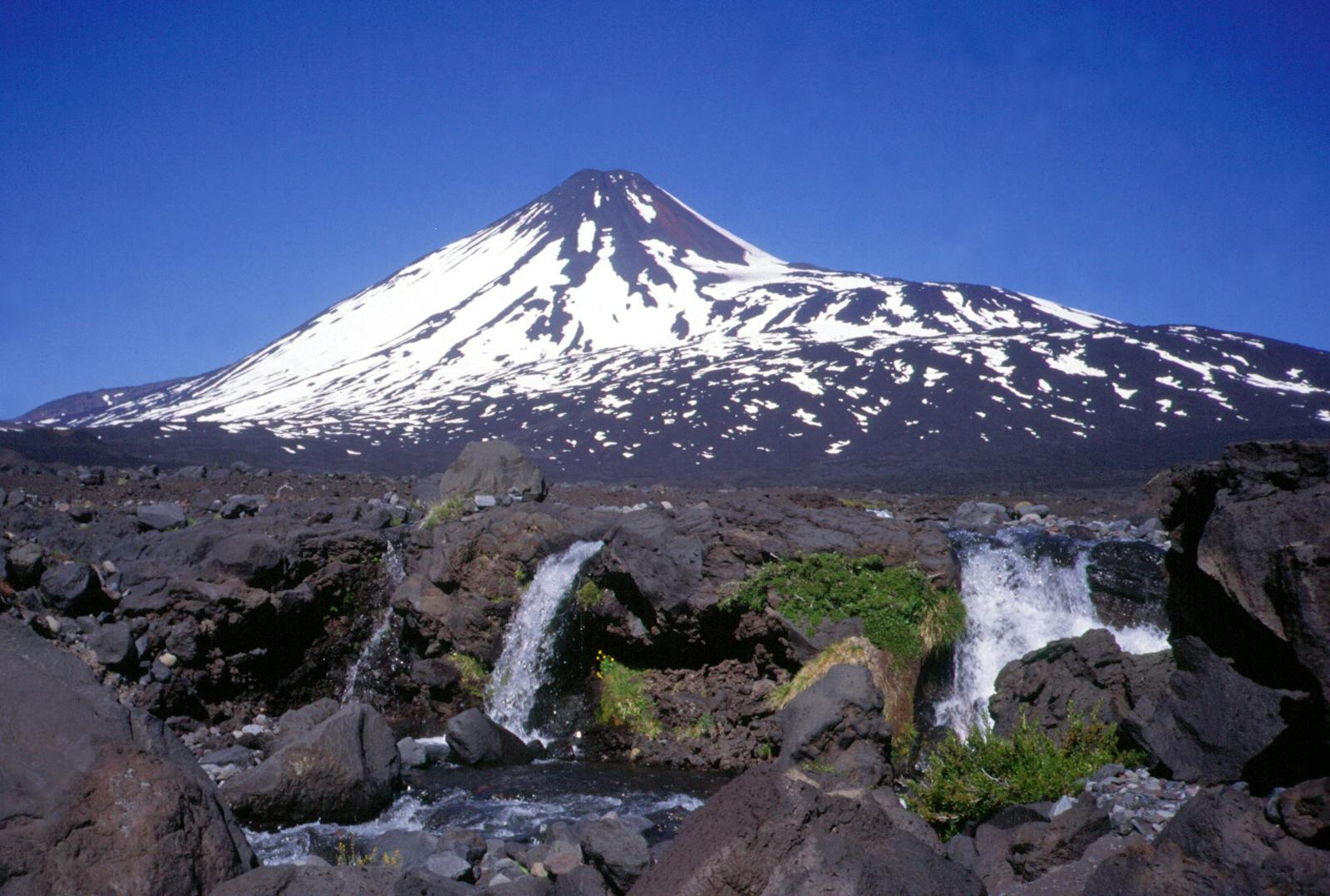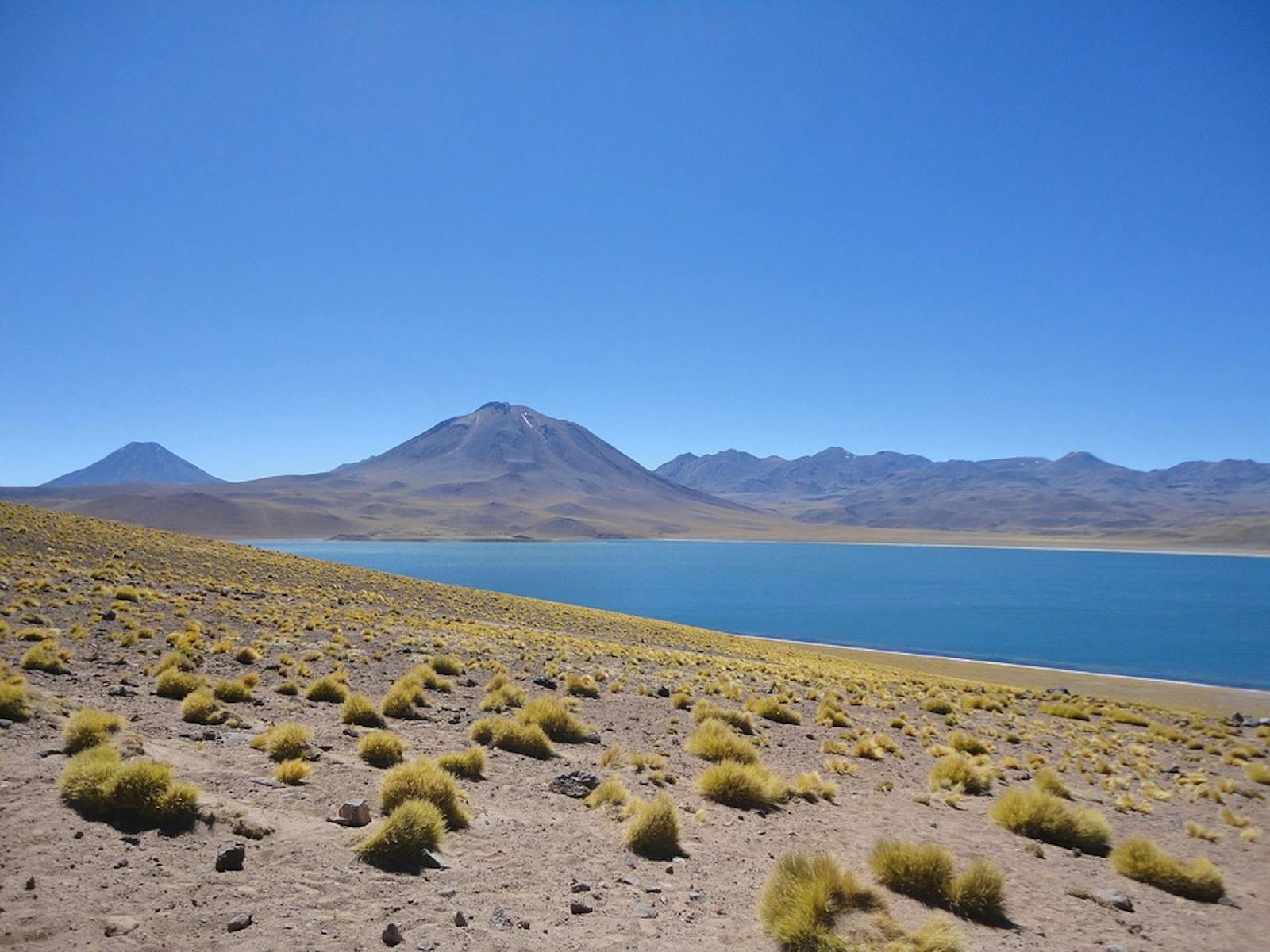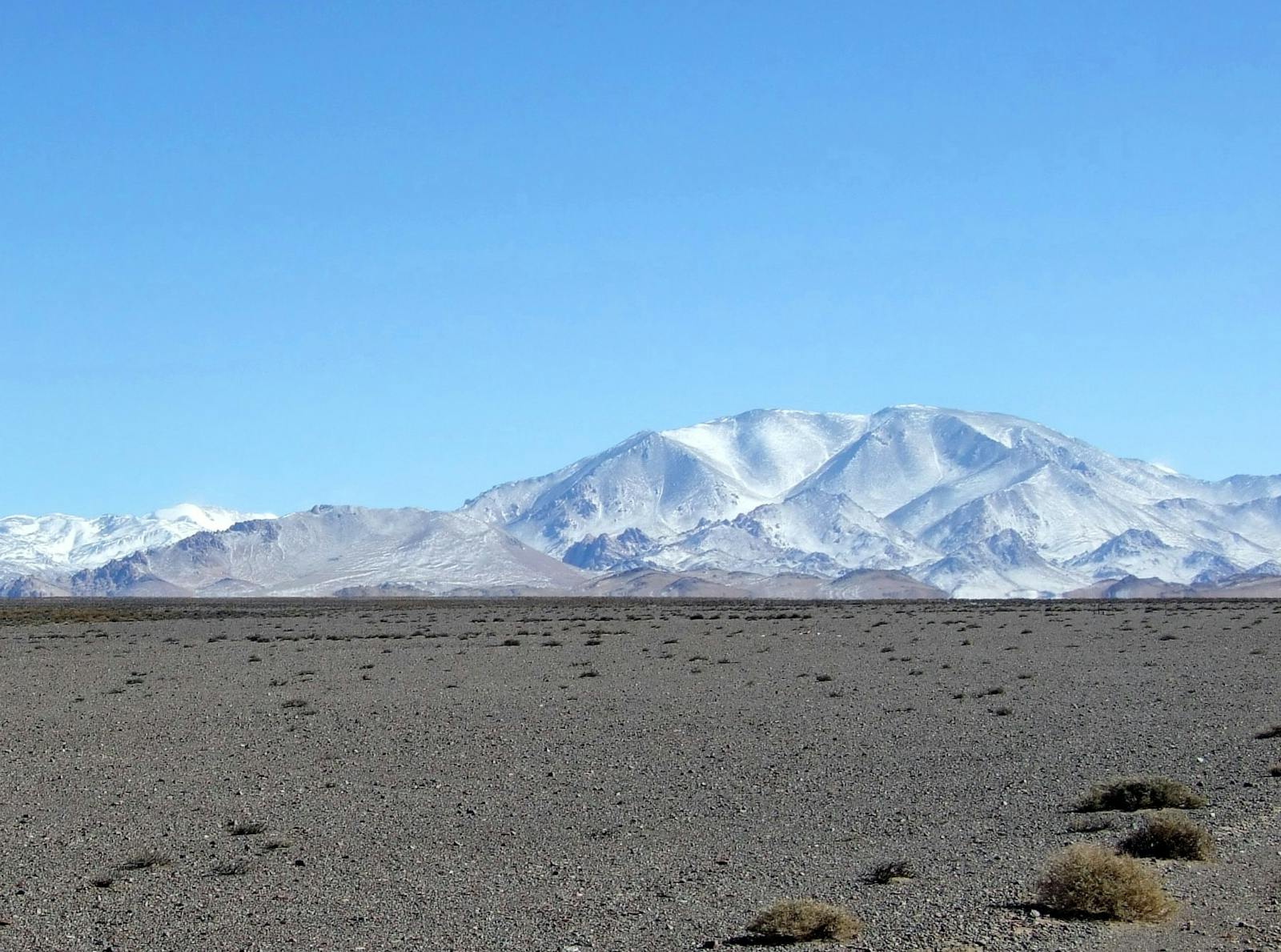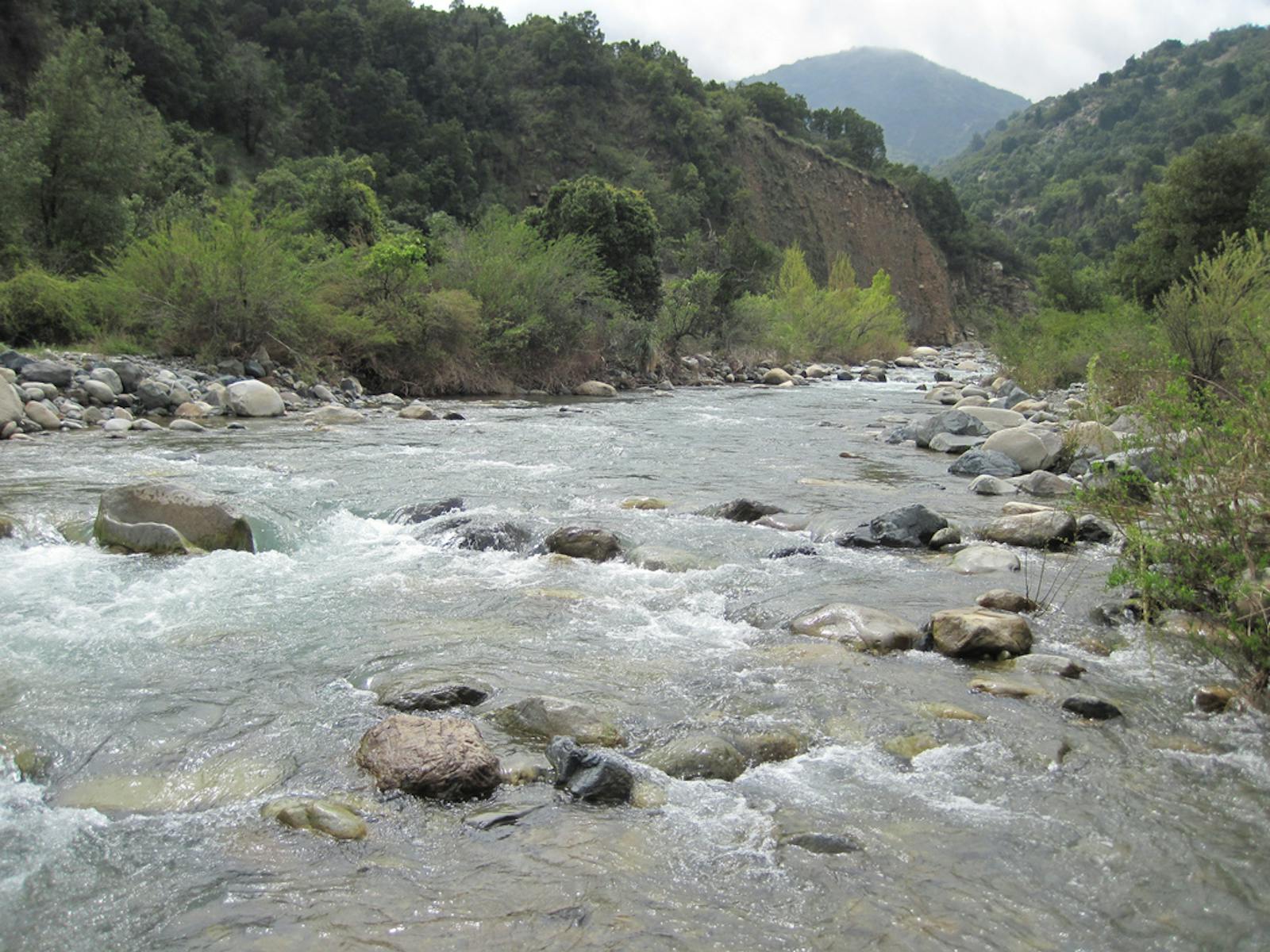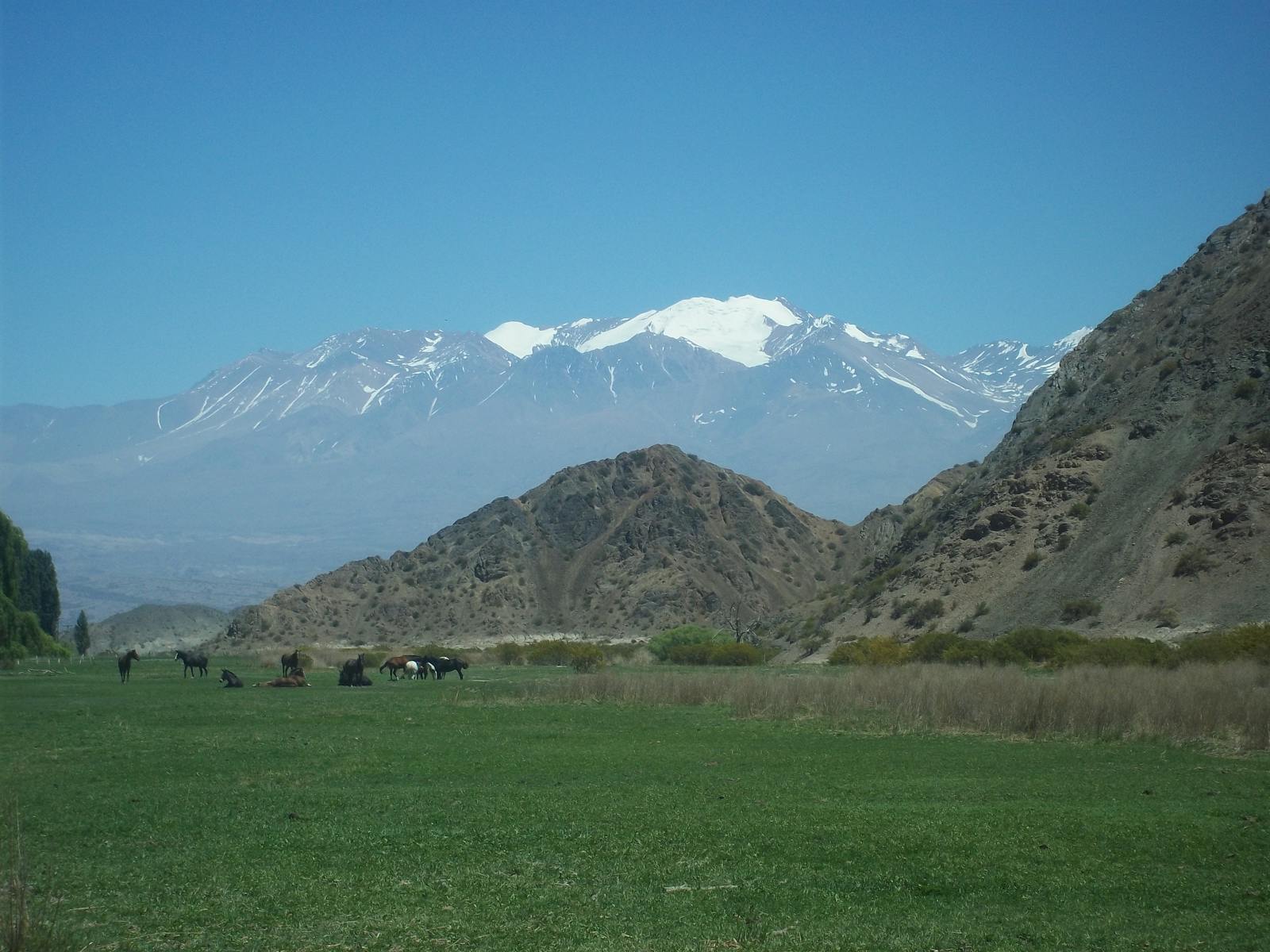Southern Andean Steppe
The ecoregion’s land area is provided in units of 1,000 hectares. The conservation target is the Global Safety Net (GSN1) area for the given ecoregion. The protection level indicates the percentage of the GSN goal that is currently protected on a scale of 0-10. N/A means data is not available at this time.
Bioregion: Andean Mountain Grasslands (NT5)
Realm: Southern America
Ecoregion Size (1000 ha):
12,519
Ecoregion ID:
595
Conservation Target:
59%
Protection Level:
4
States: Argentina, Chile
The endangered long-tailed chinchilla prefers rocky mountainous areas where it can hide or overlook its territory with some protection from predators. They are excellent navigators of rugged habitats and thrived on inland cliffs and mountain peaks where they find grasses and other vegetation to eat.
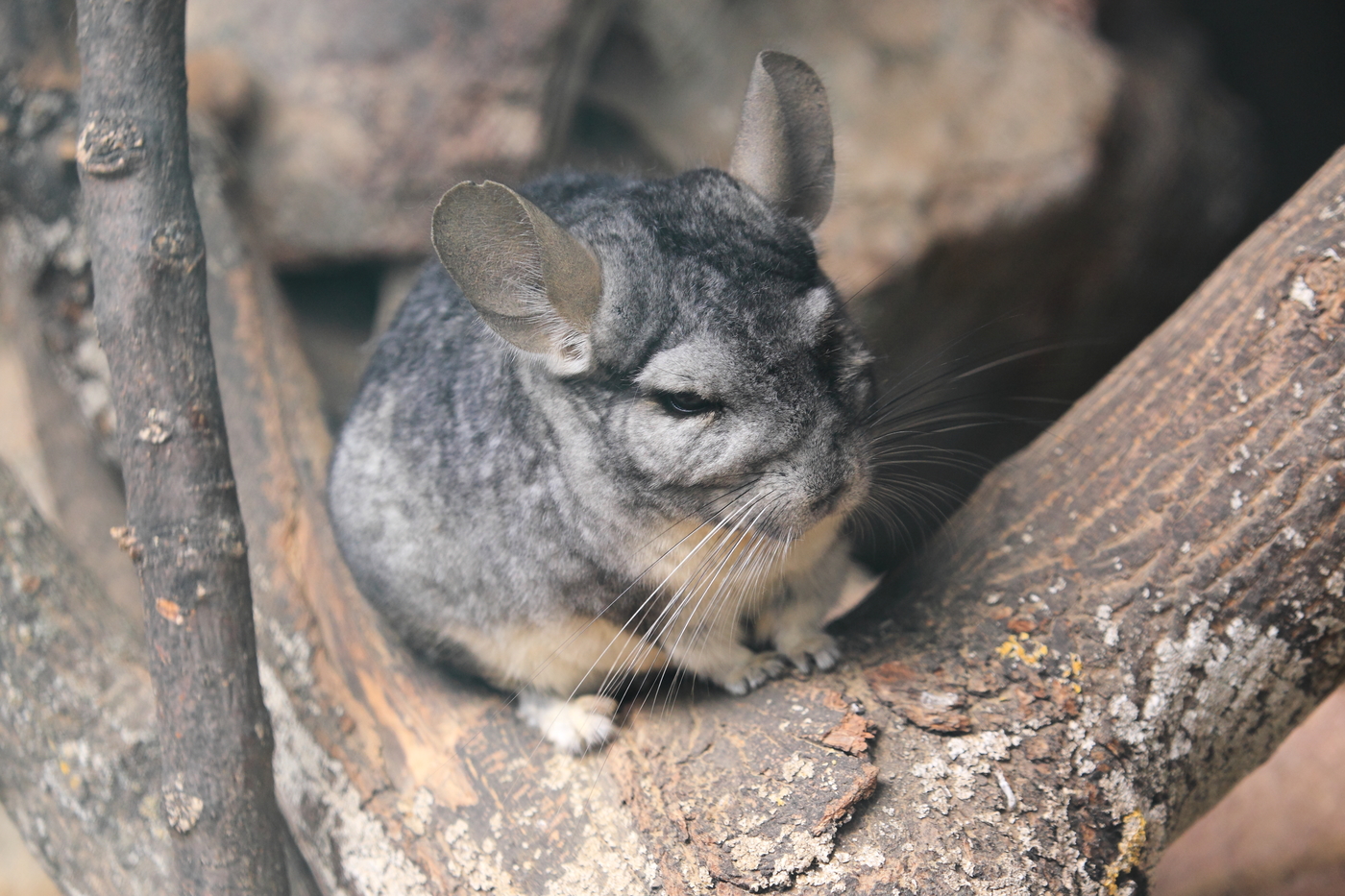
The flagship species of the Southern Andean Steppe ecoregion is the long-tailed chinchilla. Image credit: Courtesy of Dreamstime
Chinchillas have extremely soft fur which keeps them warm in the extreme cold of the winters, an excellent adaptation to the harsh environment of the Southern Andean Steppe ecoregion. In 1983, the Reserva Nacional Las Chinchillas in Chile was established to protect the last wild colonies of long-tailed chinchilla from the brink of extinction after losing much of its native habitat.
A relatively untouched piece of nature, the Southren Andean Steppe ecoregion extends along the high elevations of the Andes of central Argentina and in part of Chile at altitudes between 1,800 and 5,000 m. It includes many of the highest mountains of South America. The climate is typically dry, with snowstorms and hailstorms common and frequent frosts year-round.
Precipitation in the center and the south come from winds of the Pacific, falling mostly in winter with an average of 200 to 600 mm per year. In the northeast, precipitation is affected by winds from the Atlantic, and tend to fall in summer. In higher elevations, temperatures can vary from a maximum of 19ºC to a minimum of -25ºC.
To withstand extreme environmental conditions, the vegetation in this ecoregion have developed unique adaptations to survive. These include spines for protection, conspicuous flowers for attracting pollinators, and a dense mat growth form able to withstand the blazing wind and freezing temperature.
These specific adaptations lead to vegetation with clear altitudinal differences: the lower belt (2,000–2,700 m) is dominated by large shrubs; the intermediate belt (2,700–3,300 m) has small shrubs and tussock grasses with cushions; the high desert belt ( 3,000–3,900 m) is dominated by small forbs, rosettes, and small-sized grasses; in the highest parts of the Argentinian mountains (3,300–4,500 m), forbs such as Senecio have adapted to the extreme wind and cold of the bared rocky terrain.
The overall diversity of animal species is high for an arid steppe ecoregion, there are few endemics. Unique birds include the lesser rhea, Patagonian tinamou, grey eagle-buzzard, peregrine falcon, band-winged nightjar, lesser canastero, Patagonia mockingbird, Patagonian yellow-finch, just to name a few.
Mammals include the mara, chinchilla, Wolffsohn's mountain viscacha, Patagonian weasel, Patagonian opossum, zorrino patagónico, puma, zorro gris chico, and guanaco. Some birds of this ecoregion only rely on this ecoregion for certain seasons of a year, migrating north in winter.
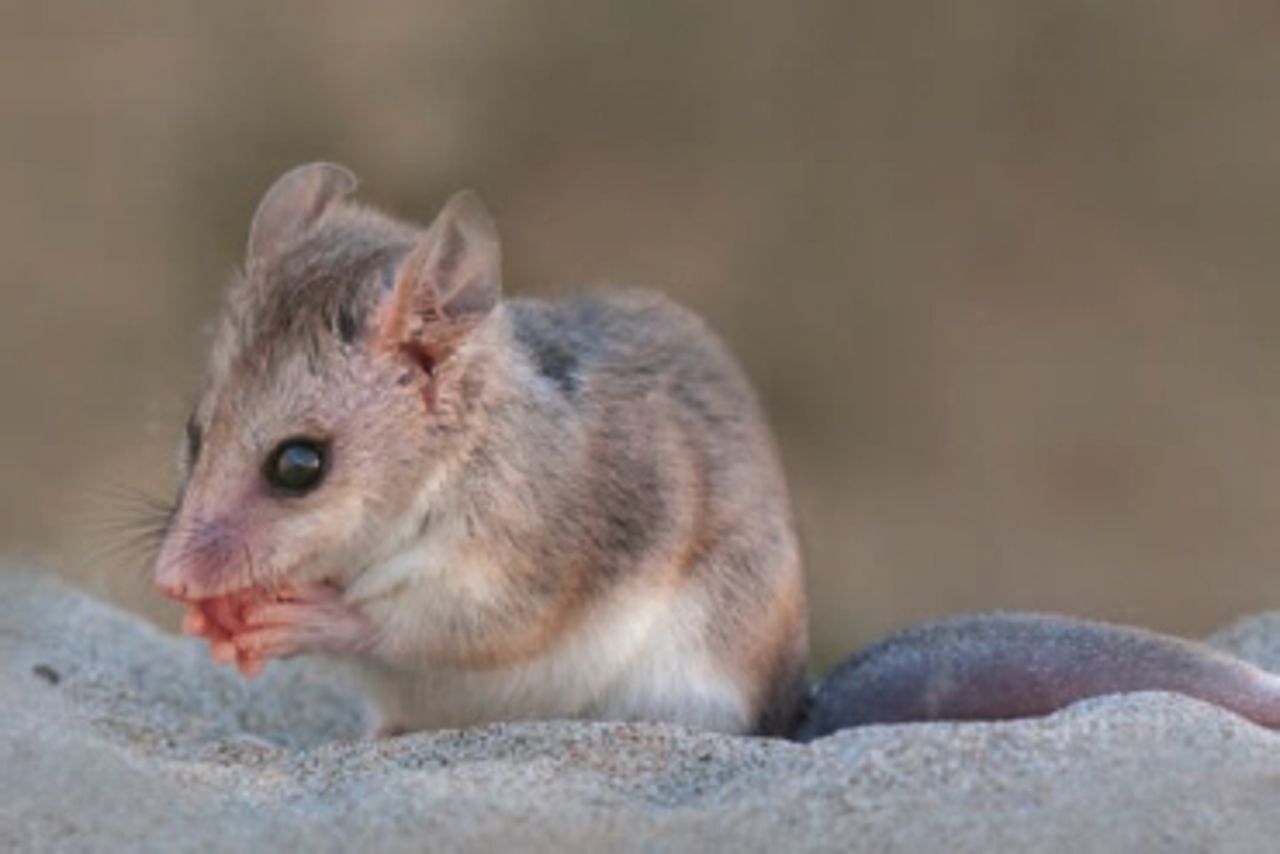
Patagonian opposum. Image credit: Creative Commons
The only endemic or near-endemic mammals are small ground living species, such as rats or mice, and the endangered long-tailed chinchilla. Other camelid mammals are found but their populations have been reduced by hunting pressures.
The reptiles and amphibians in this ecoregion are well adapted to survive in the cold and unpredictable climate. Some appear to be endemic to the ecoregion, including amphibians such as Alsodes nodosus, and various reptiles. Little is known about the insect fauna in the region, but Hymenoptera, Diptera, and Lepidoptera pollinate nearly 85% of the plants in some areas.
The most important protected areas in the region from north to south are Tres Cruces, Yerba Loca, Río Clarillo, El Morado, Río de los Cipreses, and Laguna del Laja in Chile, and Laguna Brava, San Guillermo, El Leoncito, Aconcagua, Tupungato, Domuyo, and Tromen in Argentina. These areas have been imperative in preserving the ecoregion.
This ecoregion’s terrain is at an altitude difficult for farming, reducing the potential for habitat loss. However, a marked increase in ecotourism and mountain sports (climbing or skiing) on several major mountains could produce problems with littering, erosion, sewage disposal, and the cutting of woody vegetation for fires.
Although the vegetation is likely adapted to grazing by native camelids, the recent introduction of exotic animals for hunting (European rabbit and hare, and Californian quail), as well as cattle and goats, are projected to have an impact on the ecosystem.
The priority conservation actions for the next decade will be to: 1) establish a proactive and sustainable ecotourism policy to minimize the impact to the ecosystems; 2) assess and monitor the impact of introduced species on vegetation and the habitats; and 3) further research future threats to the ecosystem.
Citations
1. Ezcurra, C. 2018. Southern South America: Western Argentina into Chile https://www.worldwildlife.org/ecoregions/nt1008. Accessed October 7, 2018.
2. Roach, N. & Kennerley, R. 2016. Chinchilla lanigera (errata version published in 2017). The IUCN Red List of Threatened Species 2016: e.T4652A117975205. http://dx.doi.org/10.2305/IUCN.UK.2016-2.RLTS.T4652A22190974.en. Downloaded on 16 October 2018.
3. Simpson, B. and C. C. Todzia. 1990. Patterns and processes in the development of the High Andean flora. American Journal of Botany 77: 1419-1432.
